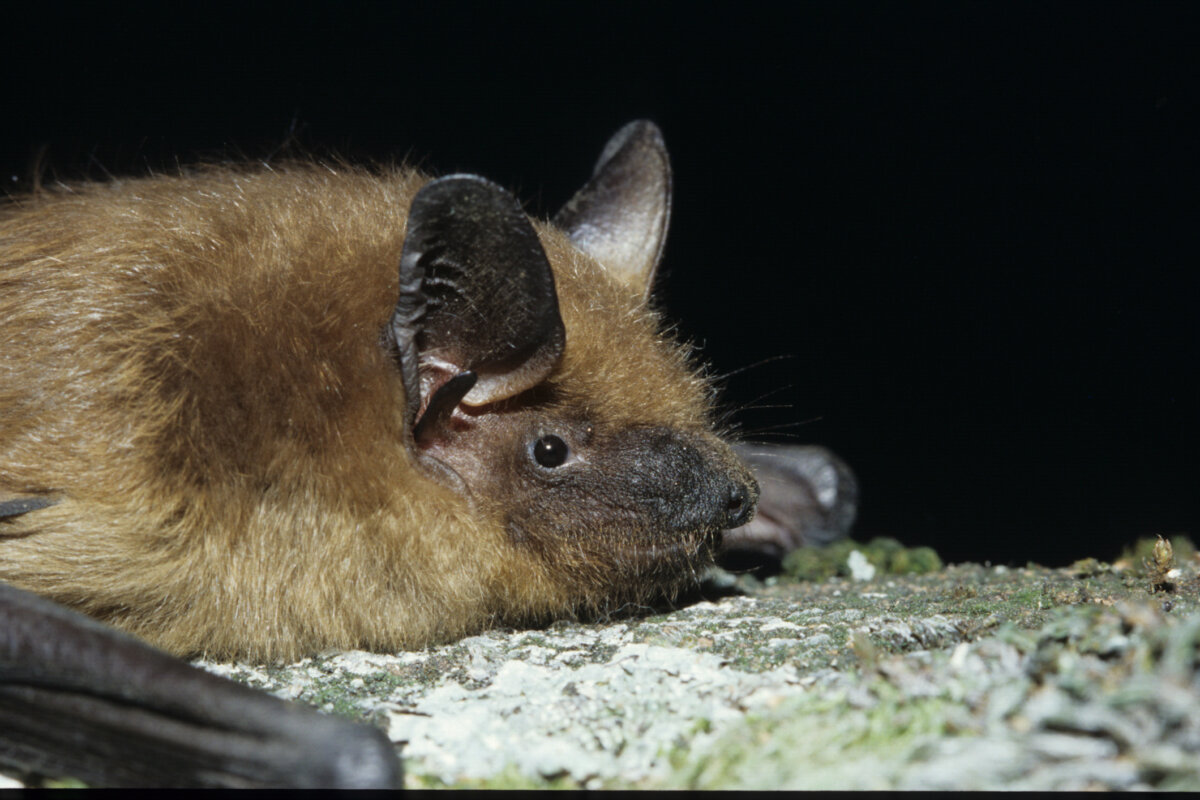
Why appreciate bats? They eat thousands of mosquitoes and other insects, and they pollinate flowers. Pictured is a big brown bat, commonly found in urban areas.
Some people are afraid of bats, but we think bats are getting a bum rap. They play valuable roles in controlling pests, pollinating flowers and dispersing seeds. And you don’t need to fear them.
Bat myths
First, let’s dispel some bat myths. “Contrary to some widely held views, bats are not blind and do not become entangled in peoples’ hair,” said the Washington Department of Fish and Wildlife. “If a flying bat comes close to your head, it’s probably because it is hunting insects that have been attracted by your body heat. Less than one bat in 20,000 has rabies, and no Washington bats feed on blood.”
No horror movies here! You would have to go to Mexico or Central or South America to find vampire bats, and even then, they very rarely bite humans.
Why appreciate bats?
Bats eat mosquitoes and other pests
Bats are really helpful in controlling pests, including mosquitoes, moths, beetles, crickets, leafhoppers, chinch bugs and more. Some small bats can catch a thousand small insects in a single hour. Oregon and Washington have 15 species of bats, and they all eat insects.
Swallows and other birds eat large numbers of flying insects, but they usually feed only in daylight. When night falls, bats take over: a nursing female little brown bat (Myotis lucifugus) may consume her body weight in insects each night during the summer. That could be 4,000 mosquitoes!
Many of the insects that bats eat are serious pests in farms and forests, and others spread disease to humans or livestock, according to the US Department of Agriculture. “Every year bats save us billions of dollars in pest control by simply eating insects.” The big brown bat, one of the species most found near homes and in urban areas, feeds on many insects that damage gardens.
Bats are important pollinators
Some bats feed on nectar and so are critical pollinators. Some plants they help pollinate include goldenrod flowers, honeysuckle, evening primrose and French marigolds. While bees and butterflies eat nectar from plants that flower in the daytime, bats pollinate those that produce night-loving flowers.
Many people are unaware that over 500 plant species rely on bats to pollinate their flowers, including species of mango, banana, durian, guava and agave (used to make tequila). “So, next time you drink some tequila or eat a mango, say thanks to the bats!” said the Bat Conservation Trust.
Bats disperse fruit seeds
Fruit bats don’t exist locally, but elsewhere they eat fruits from plants and trees. They disperse the seeds in their droppings as they fly from one area to the next.
Bats may live near you
Bats are a common wildlife species across Washington state, including urban areas, said Woodland Park Zoo, but their nocturnal habits mean that people often don’t notice them. The zoo is working with local people to observe bats in and around the Seattle-King County area and learn more about their habits. Some areas in Seattle have high bat activity. You can read their report and find out more about the bat community science program.
Threats to bats
Across the United States, bats face many threats. These threats include climate change, habitat loss and wind energy. A devastating bat disease called white-nose syndrome has killed millions of hibernating bats in the United States and Canada.
Living with bats
We can easily live with bats, and some people would like to have bats nearby, valuing their ability to help control insect pests. Bat Conservation International suggests a few ways to encourage bats:
- Plant native trees and shrubs, especially flowers that stay open through the night or bloom in the evening. Many trees flower, and trees are host to many insects that bees eat.
- Don’t tear down that dead tree. It provides useful spots for bats to roost.
- Keep it organic. Avoid the use of pesticides. Bats will do much of the insect control work for you.
- Keep cats indoors. Cat attacks are one of the most common causes of bat (and bird) mortality.
- Install a bat house. Here is detailed information about bat houses.
Removing and excluding bats
Removing bats
In spring and fall, migrating bats may temporarily roost outside on places such as window screens, fence posts and piles of lumber, said the Washington Department of Fish and Wildlife. If you see a bat roosting outside during daylight hours, leave it alone. It will probably be gone the following morning.
What if a bat flies into your home? It’s probably a juvenile learning to fly, a solitary male following prey or an adult that has been excluded from its roost. Bats often enter through an open door or window, or by coming down a chimney into an unused fireplace. Here are instructions on how to remove it safely.
Excluding bats
The best way to get rid of bats is also the safest—both for the bats and the humans involved. This is to humanely exclude them. However, this may not be possible with older buildings with many entry points. You can hire a wildlife damage control company, or do the work yourself. Here is detailed information on how to exclude bats from buildings.
